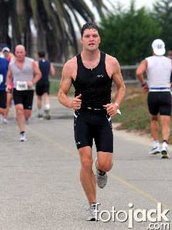Back when I was in college in the fast-receding days of the early 90’s, I used to shake off the crackling of my overtaxed brain synapses by hitting UVa’s Memorial Gym around 10 PM for an hour every night. I was pretty fanatical about it and rarely missed workouts, even during exam week. I always figured the time away from the books kept me just a little saner and more balanced than my fried-on-Mountain-Dew schoolmates (isn’t “Mountain Dew” the most ludicrous name for that swill? Just take a moment to reflect…).
Occasionally I couldn’t get to Mem by 10. Sometimes it was 10:15, or even 10:40 when I ran past the front desk attendant, scampered down the set of stairs to the left, ran past the equipment check-out desk, down the hall, and into the weight room. And the gym closed at 11!
But a weird thing almost always happened on those nights: I’d have a great workout. Of necessity, I’d cram in an hour’s worth of work into one-third the time. I’d break whatever time I had into bite-sized morsels and make sure I squeezed 20 sets into the 20 minutes I had before sprinting out the door like Indiana Jones racing from the Incan tomb, escaping just before the stone gate slammed shut behind him forever. Breathless, I’d stand at the edge of Memorial field, my muscles still quivering, take in the lovely sound of passing college women laughing loud and full over some shared secret, and gaze up at the Charlottesville stars winking at me from their place in the sky millions of miles above. I always felt great.
The point here: sometimes time pressure can be your best friend. Maybe you only have a half-hour to train, or maybe you just want to shake things up in your workout, so you set a time-pressure goal for yourself just for the challenge. Either way, it’s almost always useful and effective.
Doing an exercise for time instead of reps can be a real eye-opener. One minute of body-weight squats, doing as many reps as possible, can be just as agonizing—if not more so—than a set of 12 reps of loaded squats with no time limit. A minute of Bulgarian split squats and single-leg bridges on each leg, done the same way, can be sheer torture. Add plan old pushups, pull-ups, and situps done for a minute each and you’ve got yourself a pretty darn good workout right there. Take 30 seconds between sets, and you’ve fried every major muscle group in less than 12 minutes.
Half the reason I think boxing workouts are so tough and effective is that darn bell. You’re not thinking, I need to punch this bag 200 times. You’re thinking, I just need to keep going till the bell rings. Long after you probably would have thrown in the towel if the instructions had been “go as long as you can,” you’re still punching, giving it your all, waiting for that bell to ring so you can towel off and get yourself a drink.
Swimming workouts are all based around the clock in a similar way: you’re always working on that interval, knowing you have, say, two minutes to do 100 meters and rest before you have to start your next 100. Knowing that the faster you complete your swim, the longer rest you’ll have is a pretty great incentive to get the work done fast so that you have a good 40 seconds to pant at the edge of the pool instead of a paltry 20.
Sprint intervals of any kind are a great variation on this same principle: time at work and time at rest are tightly controlled. Tabata intervals, one of my favorite protocols, where you intersperse 20 seconds of max-effort work with 10 seconds of rest and transition, are also a terrific tool that works in much the same way.
These training methods, a mainstay in athletic training, are seeping into the mainstream. You still don’t see too many people working in this way at commercial gyms, but I certainly read a lot of articles about this or that trainer who holds a stopwatch and has his clients do a circuit of 45 seconds each of burpees, pushups, stepups, pull-ups, bodyweight squats, lunge jumps, and kettleball swings with 15 seconds rest between each movement. Do that sequence twice at max intensity and you’ll be a puddle—and you’ve only used up about 15 minutes of your day.
This kind of work has deservedly become the new go-to protocol for fat-loss and cardiovascular conditioning. I personally find this kind of workout brutal but very effective and remarkably energizing. Do it a few times a week and coffee becomes a redundancy.
Wednesday, September 26, 2007
Subscribe to:
Post Comments (Atom)




No comments:
Post a Comment